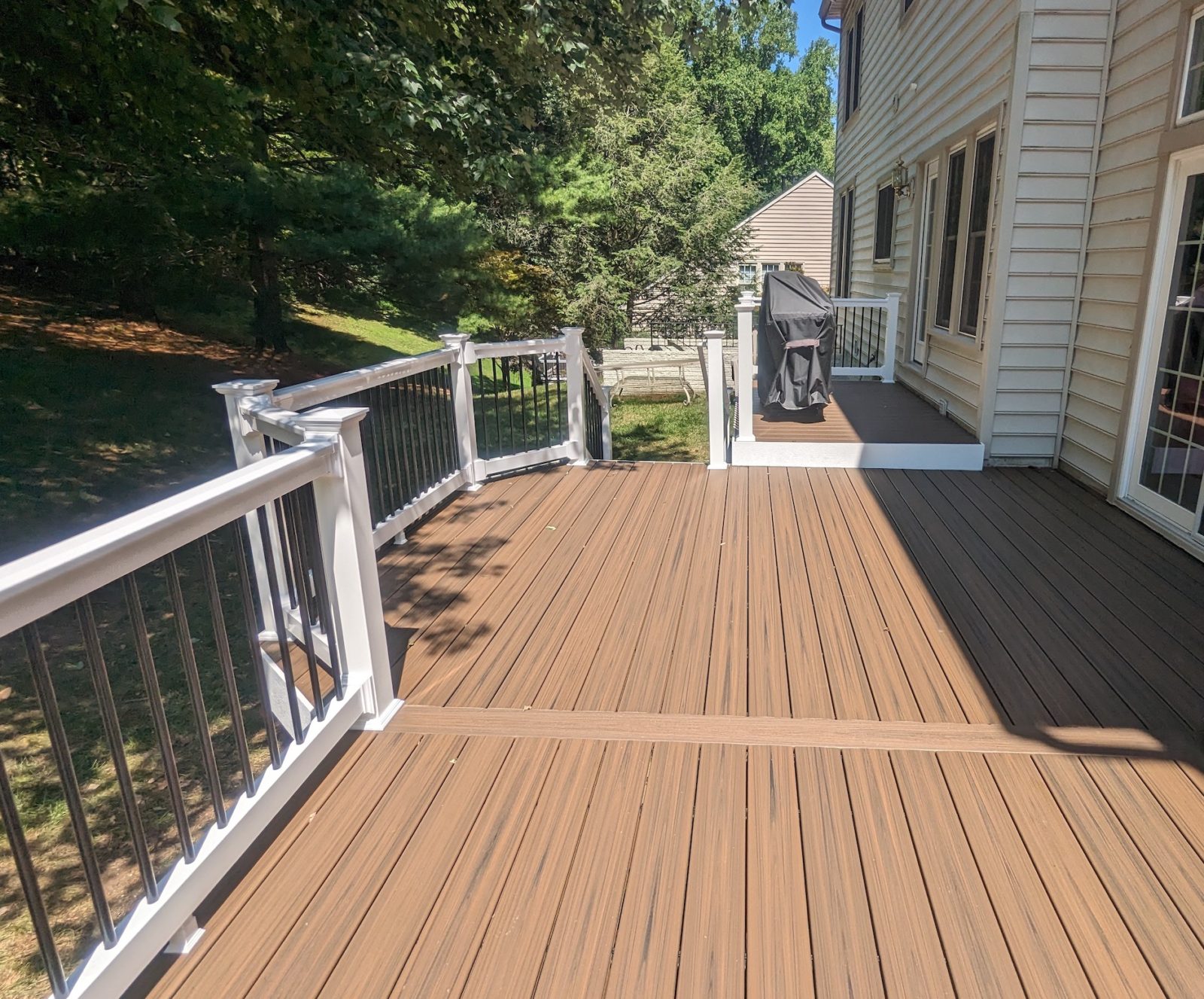Small deck repairs, such as filling holes and cracks or staining boards, can be DIY weekend projects, especially in the spring and summertime. However, depending on safety and your desired aesthetic, it might be time to replace the deck entirely. Whether you need to repair or replace your deck depends on the deck’s age, material, and the extent of the damage. If the cost of the repair is more than half the cost of a deck replacement, replacing the deck may be the best option.
If the deck is nearing the end of its lifespan and showing signs of significant rotting or damage in multiple areas, deck replacement might be the best solution. However, if the deck still has years left in its expected life and the wear and tear is superficial, such as splintering or fading, it may make more sense to replace deck boards instead of rebuilding a deck.
Before:



Once we were able to determine that the original framework was still in good shape, homeowners in Ellicott City opted to replace just the decking boards and railings, instead of replacing the entire deck. Project Consultant David King helped our clients design a new deck using Trex composite decking, which requires far less maintenance than traditional wood decking.
We first removed and hauled away the existing deck boards, railings, and steps. We then installed 364 sq. ft. of Trex Enhance Naturals decking in Toasted Sand. Toasted Sand is a tawny seashell brown with subtle dark-brown splashes, featuring a low-maintenance, wood-like grain pattern. The new decking is made of high-performance composite for durability — it won’t rot, warp or splinter, unlike wood. A matching seam board in Toasted Sand completes the surface.
White vinyl railing with round black aluminum balusters enclose the space, and white vinyl fascia wraps the deck for a clean, finished look. Last but not least, six new steps with white vinyl risers provide access to the backyard space.
After:









